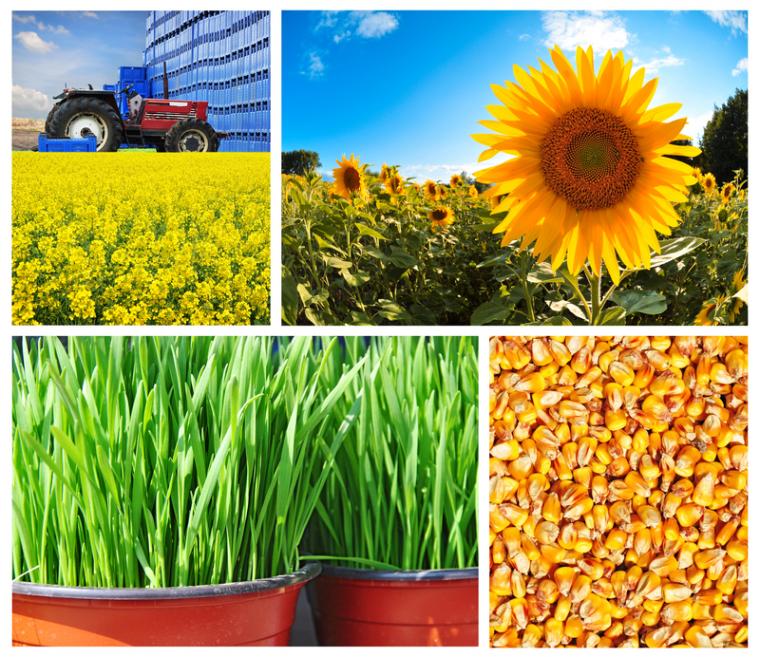
Smart growth and investment in America’s downtowns and main streets must occur now to secure the land that grows our food, according to American Farmland Trust’s new report "Farms Under Threat 2040: Choosing an Abundant Future" and the accompanying web mapping tool.
“It is urgent we safeguard the land that grows our food,” said Mitch Hunter, AFT research director and lead author of the report. “In recent years, the global food system has been severely disrupted by the coronavirus pandemic, the war in Ukraine, and widespread drought—pushing millions more people into severe hunger. The mounting effects of climate change and the rising global population will make it ever harder to ensure a stable food supply in the coming decades.”
AFT’s Farms Under Threat research has shown Americans are paving over agricultural land at a rapid pace. From 2001-16, our nation lost or compromised 2,000 acres of farmland and ranchland every day. Farms Under Threat 2040 shows we are on track to convert over 18 million acres of farmland and ranchland from 2016-40—an area the size of South Carolina. And it could get worse. If rural sprawl accelerates, America could squander 1 million acres of agricultural land every year and over 24 million by 2040. But if Americans choose a better path—if we embrace smart growth and minimize sprawl—we can save up to 13.5 million acres of the nation’s irreplaceable farmland and ranchland for food production.
Sprawling cities, climate change, energy development and remote work are converging to threaten the land that grows food, jeopardizing the nation’s food security and the environment. Simultaneously, an aging farming population is retiring, potentially leaving 40 percent of America’s agricultural land with an uncertain future.
Farms Under Threat is AFT’s multi-year effort to advance cutting-edge solutions for farmland protection. AFT uses high-resolution spatial analysis tools to identify where agricultural land has been converted to urban and low-density residential land uses. The 2040 report projects this data into the future to present three alternative development scenarios -- Business as Usual, Runaway Sprawl and Better Built Cities. The report shows that development choices have a significant effect on the future of farmland and ranchland and urges Americans to embrace Better Built Cities to safeguard local farms and ranches, bolster the global food system and improve peoples’ daily lives.
Better Built Cities is not just about saving farmland. Smart growth aims to make life better for folks living in cities and suburbs. Businesses can thrive on walkable main streets, and families can live close to their daily destinations. A variety of transportation options including walking, biking and public transit can help reduce air pollution from cars while saving people—and cities—money. Neighborhoods are more livable, with a variety of housing types and price ranges. Parks and greenways exist for recreation and respite, and abundant rural lands exist nearby to provide local food and access to nature.
"America will need more development in the coming decades as the population grows. Indeed, many states currently face a severe shortage of affordable housing. Compact development is the best way to address this need—and also the key to saving farmland and ranchland,” said Hunter. "Likewise, we must meet our growing energy demand with renewable energy that benefits agriculture and rural communities--what AFT calls smart solar. We will also need to establish programs to bring a new generation of farmers and ranchers on the land to produce food and steward the environment, as America’s aging farming population retires.”
Every American can help. Better Built Cities, the report explains, sees policymakers and land-use planners banding together with farmers, ranchers and concerned citizens. Developers can choose to revitalize urban spaces and build compact communities. Citizens can attend county board meetings and promote land-use decisions that protect farmland and ranchland. Individuals can also support local land trusts, buy locally produced food and choose to live in compact cities and town centers. Farmland and ranchland owners can protect their property with a permanent agricultural conservation easement which restricts development and guarantees their land becomes a legacy that feeds future generations.
The report explains realities and choices, mapped and analyzed. Citizens can view impacts to their communities and read about potential solutions, what they should ask of their government officials, and ways they can participate.
“Agricultural lands in the U.S. grow an astounding array of food, fiber, biofuels and other raw materials. This abundance has made the U.S. one of the most food-secure nations in the world. Yet it can also mask vulnerabilities. For too many Americans, it is easy to brush off farmland loss or view it as inevitable. This puts our future at risk,” said John Piotti, AFT president and CEO. “We need farmland not just to feed a growing population, but to provide essential ecological services that nurture wildlife, cleanse water and capture atmospheric carbon. If we remain on our current development path, we will ultimately run out of land to grow our food; but long before that, I fear we will run out of the farmland we need to heal an environmentally degraded planet.”

There are no comments
Please login to post comments